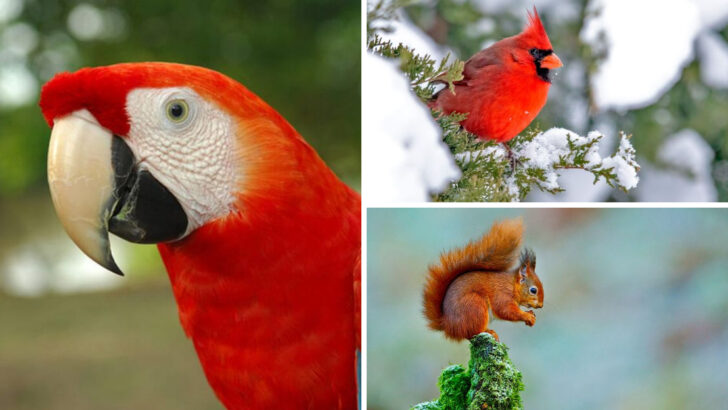Red doesn’t whisper in the wild—it shouts.
From the treetops to the ocean floor, creatures cloaked in crimson blaze like living embers against green leaves, blue water, and dusty plains. They don’t blend in. They don’t hide. They own every inch of their space.
Some flash their color like a warning sign—Back off. Others wear it like a crown—Look at me.
And you will look. Whether it’s a scarlet snake slipping through the underbrush or a blazing bird lighting up the sky, these animals are impossible to ignore.
Get ready to meet 15 jaw-dropping red creatures who prove that being bold isn’t just beautiful—it’s survival.
Red Panda
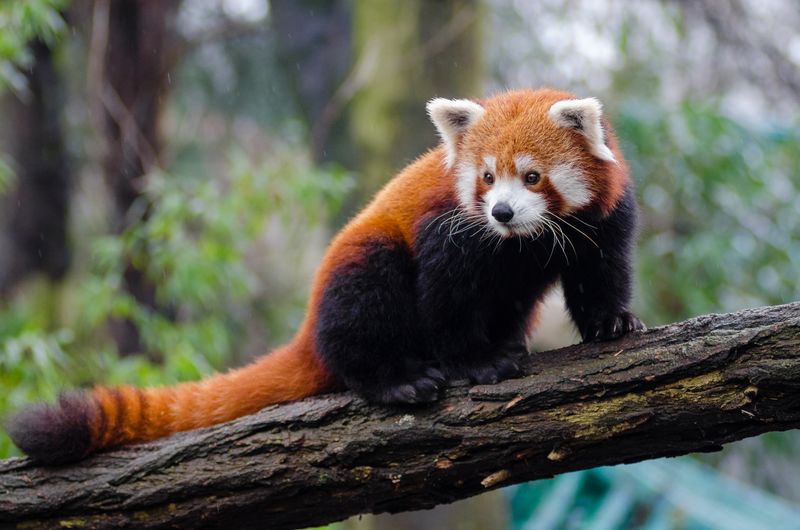
With a face as charming as its name, the red panda beguiles with its playful antics. Found in the Himalayan forests, this creature thrives among the bamboo, its primary diet. The red panda’s reddish-brown fur and bushy tail make it a master of disguise amidst the autumn leaves. Its gentle climbing skills are matched by its curious nature, making it a delight to spot in the wild. Once thought to be related to the giant panda, this unique mammal is now classified under its own family, Ailuridae.
Scarlet Macaw
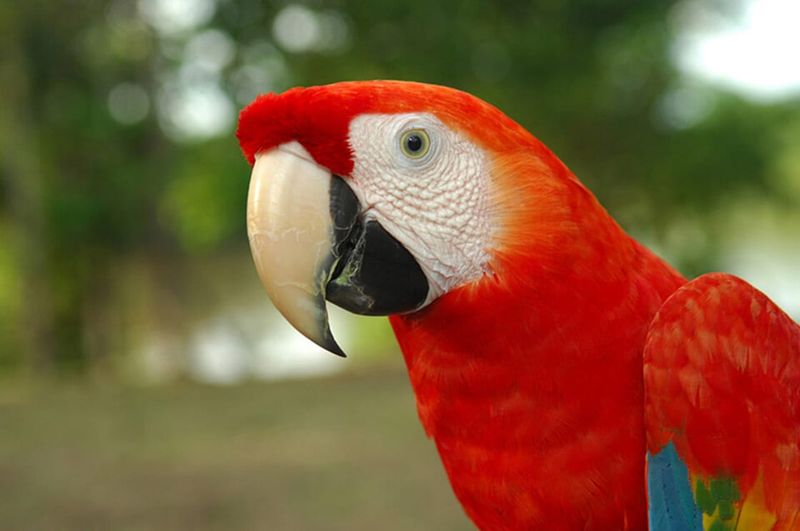
In the heart of the Amazon, the scarlet macaw reigns supreme with its vivid plumage. This parrot’s striking red and yellow feathers are a sight to behold as they weave through the dense canopy. Known for their intelligence and social nature, scarlet macaws often form lifelong bonds with their mates. Their loud calls echo through the forest, a testament to their lively and vocal presence. Historically, these birds have been cherished in indigenous cultures, symbolizing love and strength.
Red Fox

The red fox is a versatile predator, known for its cunning and adaptability. Found across various landscapes, from forests to urban areas, it is a true survivor. Its red coat provides excellent camouflage among autumn leaves, while its sharp senses aid in hunting. With a diet as diverse as its habitats, the red fox is an omnivore that thrives on both prey and vegetation. Its presence in folklore and stories underscores its significance in human culture, often as a symbol of wit and trickery.
Cardinal
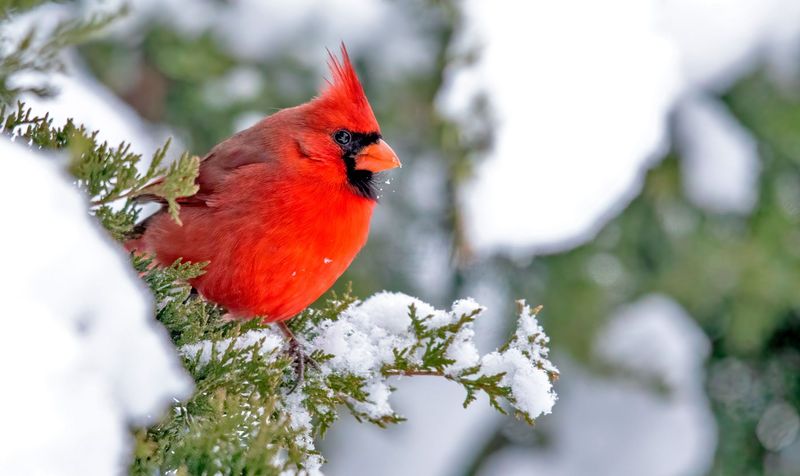
Striking and elegant, the cardinal is easily recognizable by its brilliant red feathers and melodic song. Found in gardens and forests alike, this bird is a year-round spectacle in North America. The male’s vibrant plumage makes it a favorite among bird enthusiasts, while its song is a herald of spring. Cardinals are monogamous and fiercely territorial, often seen defending their nests with vigor. A symbol of vitality and celebration, they brighten the dullest winters with their presence.
Red-Eyed Tree Frog

The red-eyed tree frog is a marvel of the rainforest, with its striking appearance and arboreal lifestyle. Its bright red eyes serve as a defense mechanism, startling predators with a sudden burst of color. This amphibian’s green body and orange feet further enhance its captivating appearance. Found in Central American rainforests, the red-eyed tree frog is an agile climber, leaping gracefully from leaf to leaf. Its nocturnal habits and distinctive coloration make it a subject of fascination for scientists and nature lovers alike.
Sumatran Orangutan
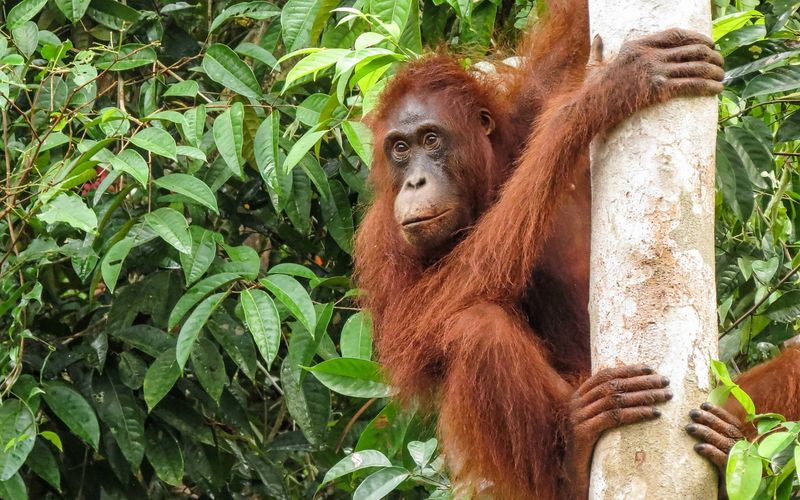
With contemplative eyes and gentle movements, the Sumatran orangutan is a symbol of intelligence and conservation efforts. Native to the Indonesian island of Sumatra, this great ape is critically endangered, with deforestation posing a significant threat to its survival. Its reddish-brown hair and expressive face make it a captivating creature to observe. Orangutans are known for their remarkable tool-use and problem-solving skills, traits that highlight their close genetic ties to humans. Conservationists are working tirelessly to protect their remaining habitats and ensure their future.
Sea Anemone
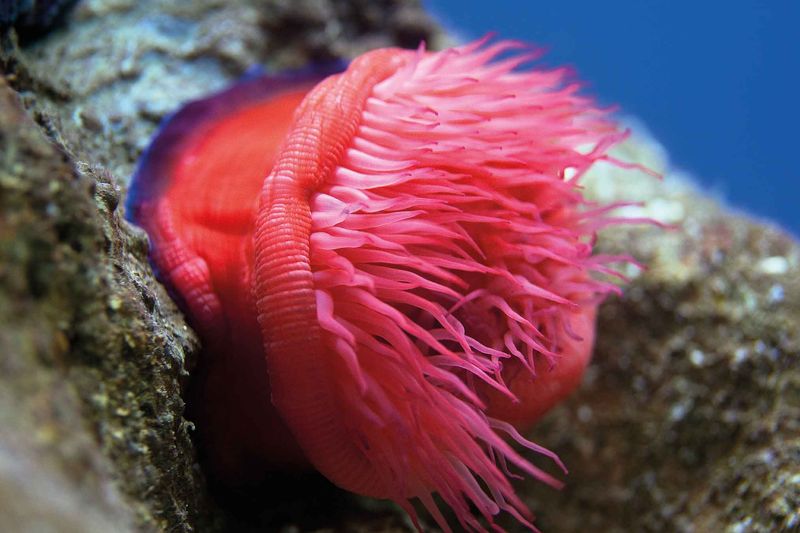
Beneath the ocean waves, the sea anemone captivates with its vivid colors and graceful movements. Resembling a flower, this marine creature is anything but passive. Its tentacles sway with the currents, ready to snare passing prey. The red sea anemone forms symbiotic relationships with clownfish, offering them protection in exchange for nutrients. Found in coral reefs and tidal pools, these anemones contribute to the rich biodiversity of marine ecosystems. Their beauty belies a predatory nature, making them a fascinating study for marine biologists.
Red Squirrel

The red squirrel is a lively woodland inhabitant, known for its agility and spirited personality. With a bushy tail and rusty-red fur, it darts through the trees with ease, searching for nuts and seeds. These squirrels are adept climbers, using their sharp claws to navigate the treetops. In winter, they rely on hidden caches of food to survive harsh conditions. The red squirrel faces competition from the invasive gray squirrel but remains a cherished symbol of native wildlife in Europe and parts of Asia.
Red Coral
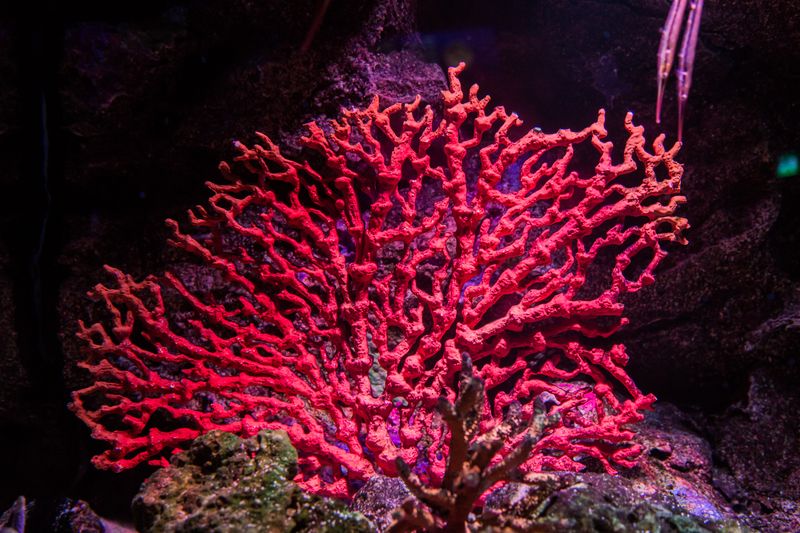
Red coral is a treasure of the ocean, prized for its beauty and ecological importance. This marine invertebrate forms intricate colonies that provide habitat for a multitude of ocean species. The striking red hue of the coral is a result of its symbiotic relationship with algae. Found in the Mediterranean Sea, red coral has been harvested for centuries, used in jewelry and decoration. Its conservation is vital, as coral reefs face threats from climate change and human activities, making them key indicators of ocean health.
Red Admiral Butterfly
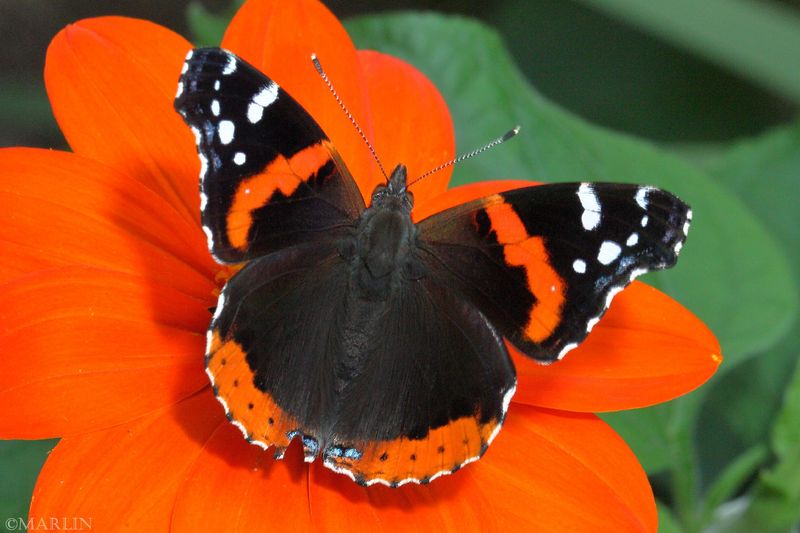
With a flutter of its wings, the red admiral butterfly brings joy to gardens and meadows alike. Its striking red and black patterns are a visual delight, making it one of the most recognizable butterflies. Found across Europe and North America, it is a migratory species, traveling vast distances with the changing seasons. The red admiral’s caterpillars feed on nettles, contributing to its widespread distribution. A symbol of transformation and beauty, it enchants all who encounter its graceful flight.
Red Kangaroo
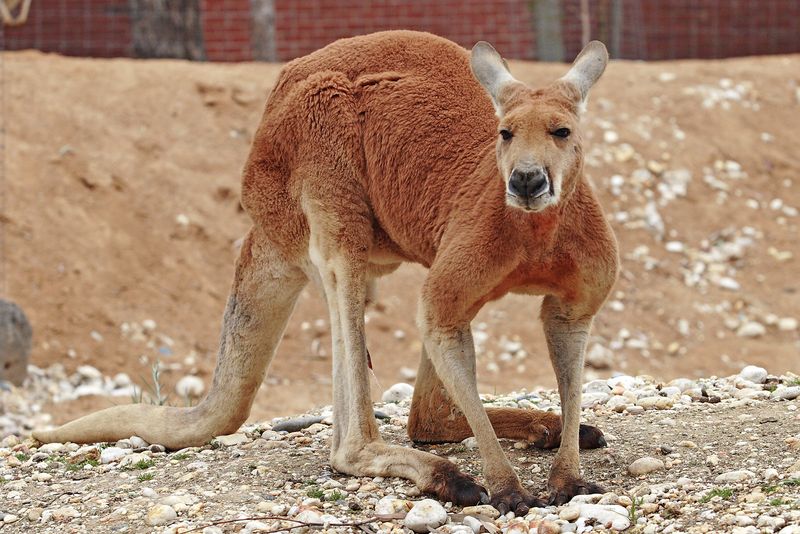
In the vast expanse of the Australian outback, the red kangaroo stands as an emblem of resilience and strength. As the largest marsupial, its powerful legs and tail are adapted for swift movement across the arid landscape. The red kangaroo’s social structure is intriguing, with mobs led by dominant males known as boomers. These kangaroos play a critical role in their ecosystem, aiding in seed dispersal and vegetation control. Their striking red-brown fur and graceful leaps are iconic, symbolizing the unique wildlife of Australia.
Red-Bellied Woodpecker
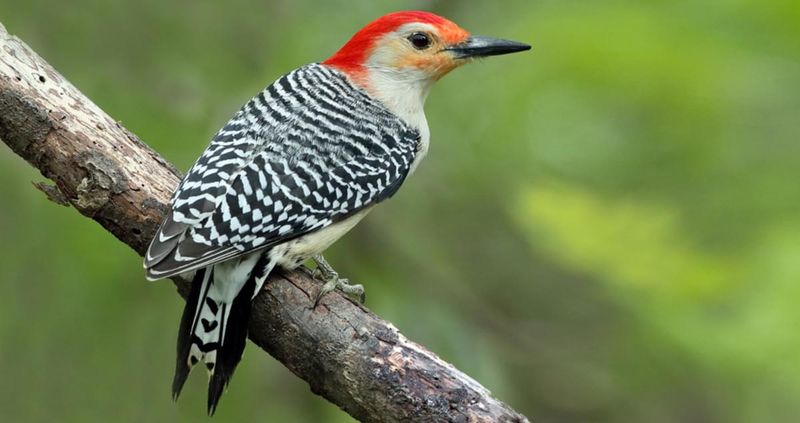
The red-bellied woodpecker is a dynamic presence in North American forests. Despite its name, the bird’s most noticeable feature is its bright red head. Its distinctive drumming echoes through the woods as it searches for insects beneath the bark. This woodpecker’s adaptability is evident in its varied diet, which includes nuts, seeds, and fruit. The red-bellied woodpecker is a vital part of forest ecosystems, helping control insect populations. Its lively demeanor and striking appearance make it a favorite among birdwatchers.
Red-Legged Frog
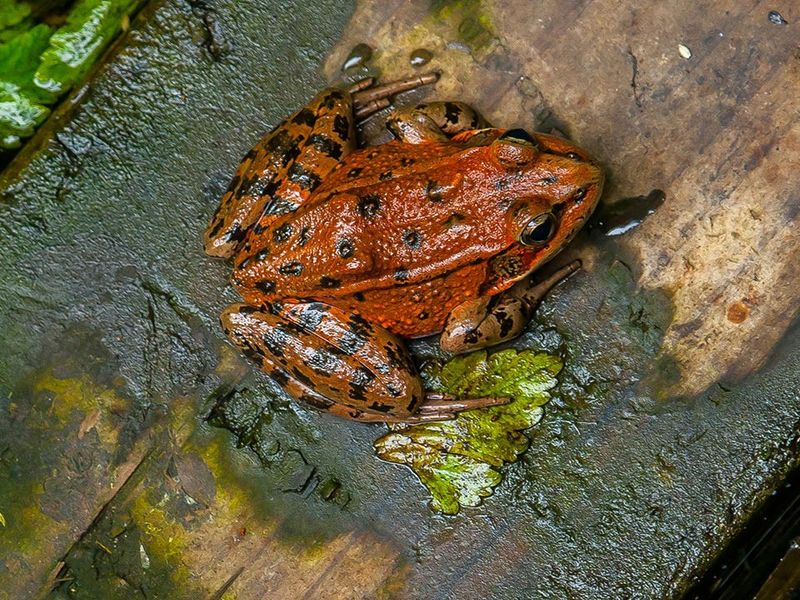
The red-legged frog is a symbol of tranquility, often found in the peaceful ponds and streams of the Pacific Northwest. Its subtle red limbs and earthy tones offer perfect camouflage against predators. This frog’s life cycle is closely tied to aquatic habitats, where it breeds and feeds. As an important indicator species, the red-legged frog reflects the health of its environment. Conservation efforts focus on preserving its wetland habitats, ensuring that this amphibian continues to thrive for generations to come.
Red-Crowned Crane
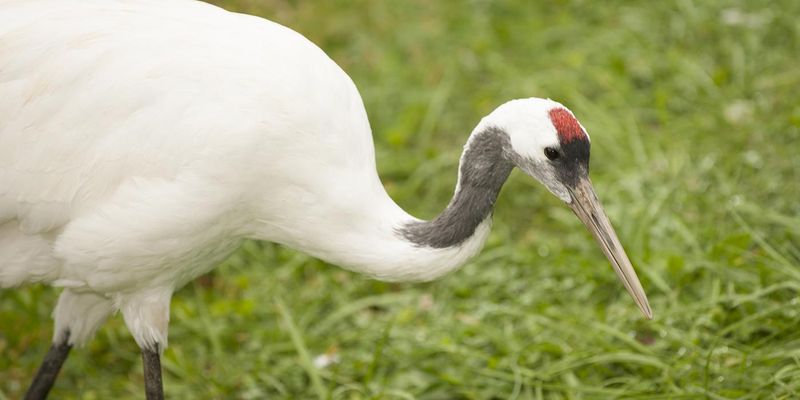
In the wetlands of East Asia, the red-crowned crane is a symbol of grace and longevity. Its striking red crown and stately presence make it a revered creature in many cultures. Known to mate for life, these cranes perform intricate courtship dances, a mesmerizing display of harmony and commitment. As a symbol of peace and fidelity, the red-crowned crane is celebrated in art and folklore. Conservation efforts are crucial, as habitat loss threatens their populations, highlighting the importance of protecting wetland ecosystems.
Red-Winged Blackbird
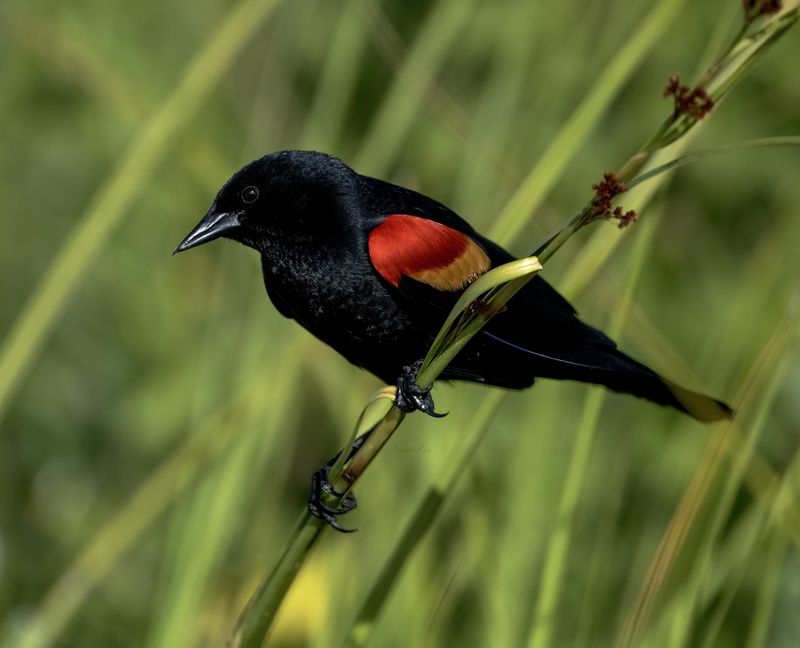
The red-winged blackbird is a familiar sight in marshes and wetlands, its bold colors a striking contrast to its dark feathers. Males display brilliant red and yellow wing patches, a warning to rivals and an attraction to mates. Known for their strong territorial instincts, these birds fiercely protect their nesting areas. Their melodic calls add a lively soundtrack to wetland areas, where they play a role in controlling insect populations. The red-winged blackbird’s adaptability ensures its presence in diverse habitats across North America.

